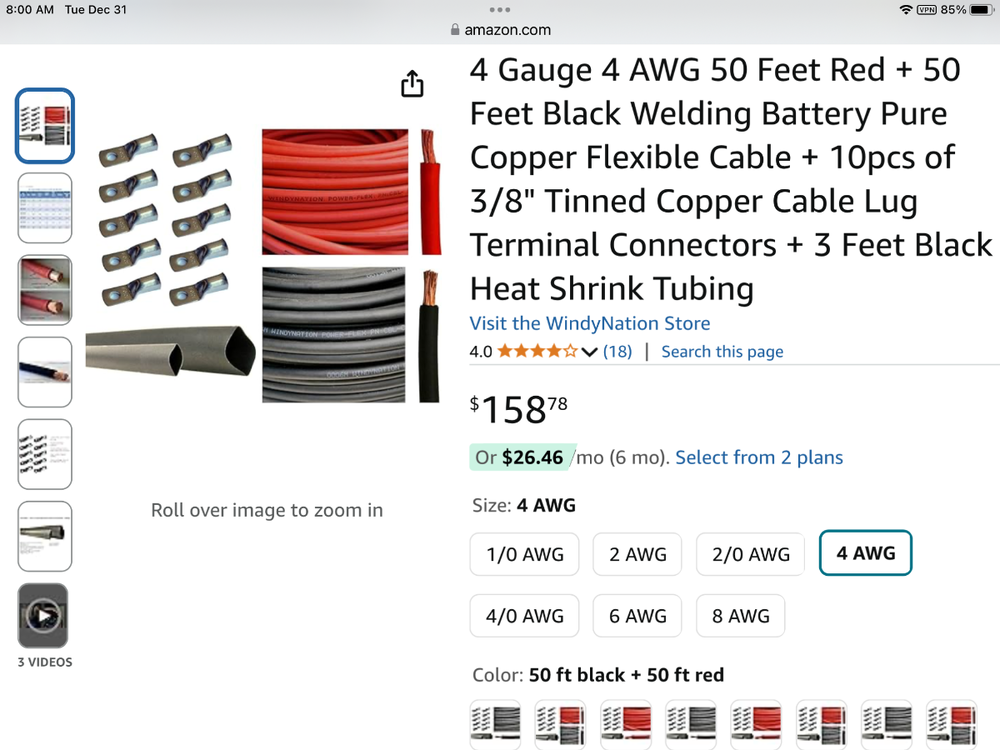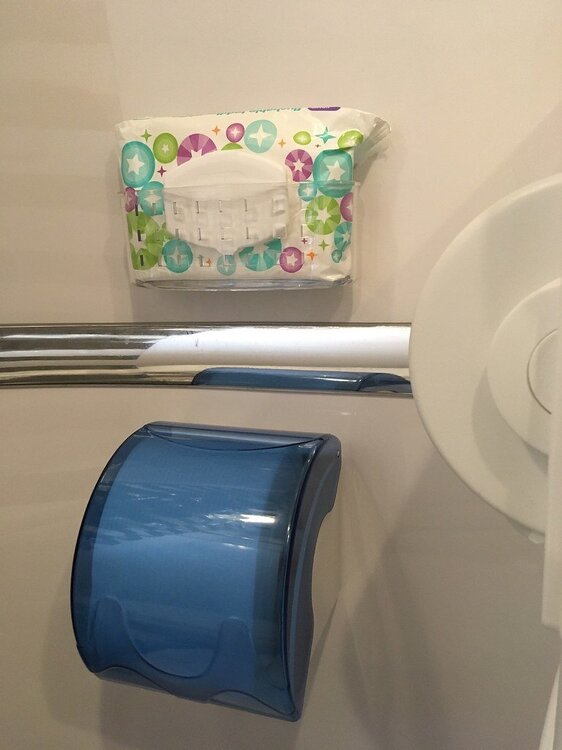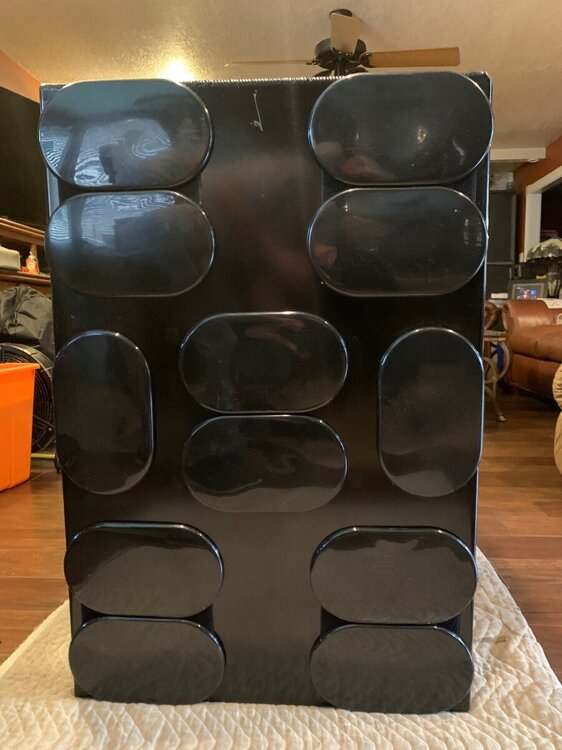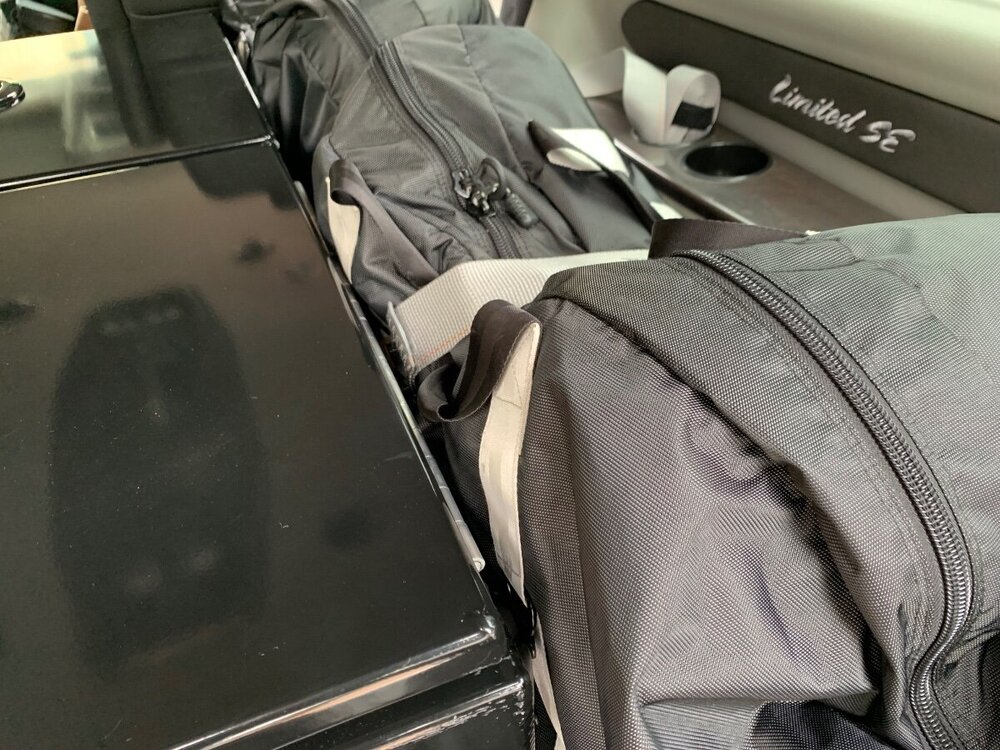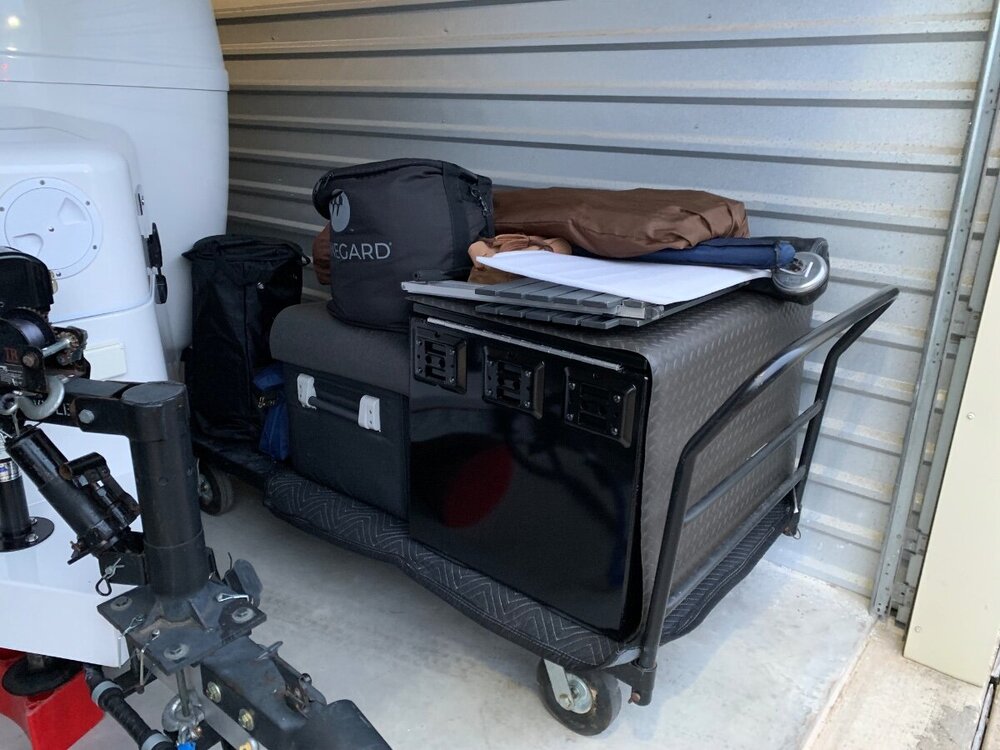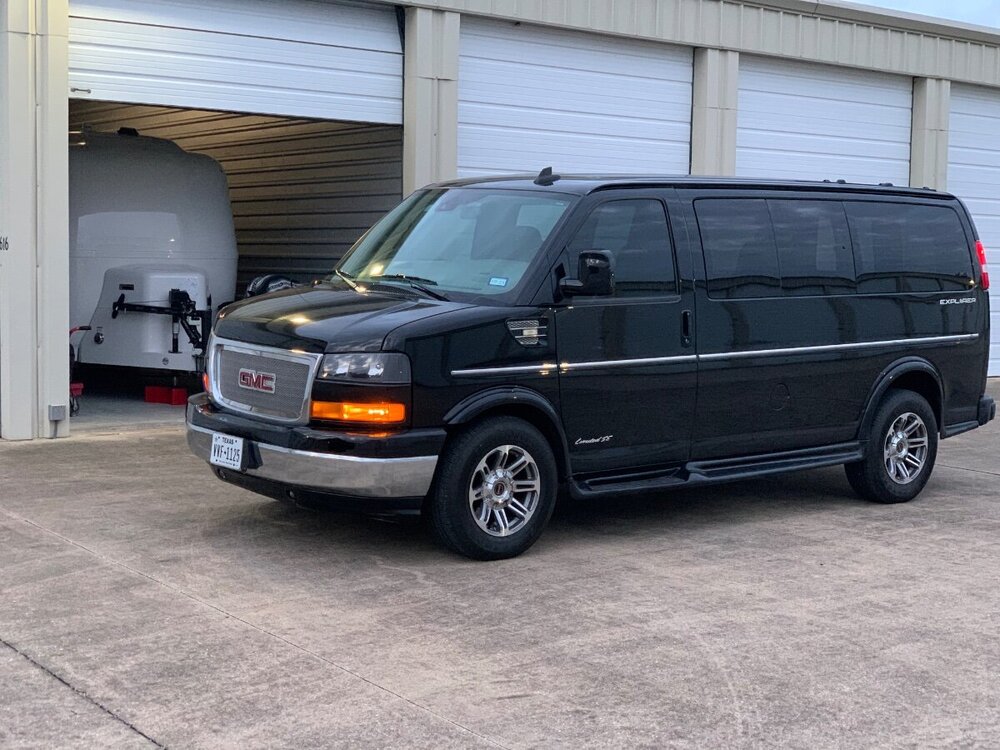-
Posts
1,121 -
Joined
-
Last visited
-
Days Won
35
Everything posted by Ronbrink
-

Replacing black water release valve
Ronbrink replied to Imelda's topic in Mechanical & Technical Tips
Distinguishing black from gray water is definitive, so concentrating on the black tank valve should be your priority. Regarding valve blockage, some owners have experienced the tank hole cutout being the culprit. I experienced leakage once, turned out the pull handle was turned in such a manner as not to be fully seated. Both black and gray handles are in a recessed box and can hangup on the edge if not paying attention to proper orientation. -
It could if you know there will be a really good ground, but why take a chance with sensitive electronics? That said, 1) best practice is to have a dedicated cable from the battery and 2) many DC-DC manufactures recommend it. I paid $115 for cable in 2020, here’s the current price. I used every bit of the 50’ cable with the Renogy 40A mounted under the rearward dinette seat hatch, your 60’ calculation should suffice.
-
Our 2020 OLEll 579 was ordered with the stock Brightway battery bank, Xantrex 2000W inverter and no solar. I soon ditched the Brightways and installed four Trojan T-105 6V batteries my Son gifted me when he upgraded his motorhome to LiFePO4s. Last year I upgraded to LFPs, specifically two LiTime 230Ah batteries. I changed settings in the Xantrex for the new battery type and disconnected the vehicle charging wire at the 7-way cable connector. I, as well as @topgun2, have detailed the installation of said batteries in respective posts. I have had no issues using my Xantrex with this setup, and have also taken measures to operate the a/c on battery, as well.
-
Another back up plan and mod. Tight quarters may curtail proper implementation of any suggested ‘backing up’ maneuvers!
-
I went the easy route and installed LED closet lights; rechargeable, dimmable, motion sensor and wireless. Larger ones in the pantry and under the curbside bed, smaller in the battery bay and dinette seat hatches. Easy mount with a magnetic strip and long battery life.
-

Elite I bed across the back and adding some color
Ronbrink replied to Ron and Phyllis's topic in Ollie Modifications
Have you tried placing a folded blanket or pillow under the table, then lowering it onto the bed or seat cushion when in transit? I use pillows with our Lagun tables and they stay put; I find it too cumbersome to remove and stow whether underway or not in use. -

Elite I bed across the back and adding some color
Ronbrink replied to Ron and Phyllis's topic in Ollie Modifications
Alternatively, Oliver uses the Original Lagun table support, visit lagunusa.com for more information. -
Another alternative site, Queen Wilhelmina SP near Mena, atop the second highest peak in Arkansas. If nothing else drive to the Lodge and enjoy a meal or brunch at Queen’s Restaurant.
-
Right that, a sofa/couch compromise! If my KTTs ever become too firm for my ‘old’ bones, I’ll try a memory foam topper for a softer comfort level. To your point about being thick (8”) and heavy latex, I stand them on edge to cover with the bottom sheet and install Bed Scrunchies, as well as accessing the hatch areas.
-
Our Oliver lives indoors when not in use and is plugged into the facility’s 15A service outlet. When the charging aspect of the Xantrex 2000 failed, a dedicated charging system was installed to maintain SOC. The LFPs slowly discharge over extended periods of time from minimal draws and when 75% SOC is reached the system will turn On, fully charge the battery bank, then turn Off. Only time will tell if this practice is a detriment to these batteries.
-
Spent a lot of time at this refuge while collecting field data on the Northern Leopard Frog for a National contaminants study with the USFWS. Now that I’m retired from the Service, a return to camp there is on my bucket list!
-
Don’t get me to ly’n! This video explains the purpose on a soft start; nothing you don’t already know, but may be informative to others less astute. This is a pic of the YT to search.
-
Indeed, recommended two over the battery(ies), and good measure to fold the tag end back over the cam then use a tie wrap. However, the buckle type with a flip down lever seem more secure and reliable. Regardless, metal of choice is stainless steel with precautions taken to avoid contact with battery terminals.
-
@jd1923, I seem to recall from past reads some time ago that the Micro-Air EasyStart ‘Breeze’ Soft Starter was recommended for the Atmos 4.4, and that the ‘364’ model would not work. I installed the ‘364’ on the Dometic and had hopes of saving some bucks by installing it on the Atmos, but ended up having SDG install the SoftStartRV brand they use.
-
Exactly, the blue straps with plastic fasteners are not adequate for this application, even as secondary securement. The cam lock straps are strength test rated and can be cinched down to the extent of one’s own strength; pressure on the cam releases the tension. For optimum securement and safety reasons, a ratchet strap would actually be the best choice.
-
-
To his credit, @Just Joe does show use of covers and metal cam lock straps in his last photo to protect and better secure the loads, respectively. However, agree with your point that proper strap configuration is paramount!
-
When towing with a truck, the majority of ‘stuff’ brought along on a camping trip or road adventure is conveniently stowed within the various holds of the Oliver and bed of the TV. However, even though my former crew cab Silverado 1500 had a storage box under the rear seat, it was mostly used to accommodate service tools and supplies for the truck and thus, found myself utilizing the rear floorboards and seat as additional cargo space when traveling. There’s peace of mind knowing cargo carried in the bed of a truck is adequately secured, not so much for that behind the front seats! All one needs is something going on from behind when something tragic is happening up front, no bueno! We’re required to wear seatbelts for good reason, proper securement of vehicle interior cargo should be of equal importance. I would be interested in learning how owners with trucks/SUVs safely carry their cargo within. My awareness of cargo securement was heightened recently with acquisition of a converted cargo work van as my TV; specifics are detailed in a forum post last October under ‘Towing an Oliver’ and titled ‘2019 GMC Savana 2500 Cargo Van’, if interested. Unlike service utility work vans that generally have a partition or cargo net, along with containment shelves and boxes, to secure cargo and ensure personal safety; conversion and passenger vans are more designed for ‘people’ cargo. In the aforementioned forum post, I addressed cargo containment, but cargo securement was still under consideration. Here is what I did to address the subject matter: Maiden voyage to Texas Oliver Rally, Inks Lake SP; cargo contained, but not secured! DC CARGO E-Track system components were obtained via online purchases from Tractor Supply. Each of the Buyers Products boxes were fitted with six of these brackets, three at the top of each end. A 1/4” x 8” aluminum backing plate was used to attach and strengthen these mounts. Backing plate cut to size, holes drilled and tapped for mounting bolts. Containment boxes prepped for backing plate and E-Track bracket installation. Super Sliders affixed to bottom of containment boxes for ease of handling on interior carpet. Three E-Tract rails fastened to deck to accommodate securement straps. Aluminum plate at floor level is runway for folded e-bikes. This box was slid rearward once back box was removed for storage at COW Barn. It primarily contains items typically kept in the TV with additional storage space, as needed, a trunk per se. Ratchet straps best used for non-towing vehicle use. Box securement once e-bikes are deployed. Wider Cam straps best used for e-bikes and subsequent box securement when traveling. Rear box is for camping ‘stuff’, forward as a truck and more ‘stuff’. Driver’s side box securement using ratchet straps. View of e-bikes ready for ‘takeoff’ on runway! Cam strap securing e-bike. Ratchet straps for spare propane tank, generator and other needs. Items too long for the containment boxes are stowed behind at side panel. Oliver-mounted hoist used to transfer box at storage facility. TV moved forward to enable box positioning. Cam straps used for the lift. Containment box lowered onto platform cart. Liking the modular containment storage.
-
I would be more concerned when turning sharp corners or turnarounds with your setup; even backing up into a campsite pad could be challenging, which is usually not a straight shot! Aside from that, you’ve made good use of this valuable real estate; really like the gas can mounts. Many owners have added weight to the tongue and seem pleased, rear additions or not. Good luck with your endeavor!
-
Yes!
-
Good advise, precautions are taken.
-
I answered my own question! Seems the best choice is either a Chevy Express or GMC Savana cargo work van; highest tow and cargo capacity ratings for 2500 and 3500 van models. Yesterday’s visit to the COW Barn to check on the Oliver.
-
I’ve always made it a practice to carry a spare propane tank; reasons being two-fold, mainly as a dedicated tank to run a dual fuel generator for air conditioning when needed, but also as a convenient swap when one of the trailer-mounted tanks becomes empty. I upgraded to 30 lb. tanks on the Oliver early in ownership along with a spare of equivalent size, and soon learned the benefit of having the tank in need of refilling in the TV when running around rather than at the Oliver when setup at camp. In the beginning I used a Camco Cylinder Stabilizing Base, but after a couple years of use the plastic failed and it went to the recycle bin. I made do without for a while, but when setting up my ‘new to me’ tow vehicle I decided a cover, rather than just a base, would best suit my needs. Here’s what I ended up with: Tank cover with carry straps, rigid top and bottom panels, Velcro side access flap, two large pockets, anti-slip footings and durable fabric construction. Primary and secondary regulators for generator, fire pit and Blackstone stowed at tank top in protective bags. Flip-up flap to access tank valve, and GasStop device with pressure indicator and purging feature. Strap securement for propane tank and generator. Amazon purchase, also available in 20lb. tank size.



